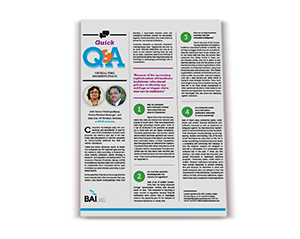Quick Q&A on
Real-Time Payments Fraud
Download now!
All fields required.
Consumers increasingly enjoy the convenience and spontaneity of peer-to peer (P2P) transactions between bank accounts. But there’s a dark side to the relatively new phenomenon of real-time payments via money-transfer platforms like Zelle and Venmo—bad actors.

These bad actors defrauded nearly 18 million U.S. consumers via P2P payment apps and digital wallets in 2020, according to financial services industry consultant Javelin Strategy & Research. And regulators are taking notice. The Consumer Financial Protection Bureau (CFPB) is considering requiring banks and credit unions to compensate more consumers who’ve been victimized by cybercriminals, according to published reports.
BAI talks with Saberi Chattopadhyay and Alak Das about the rise in real-time payments fraud, and the steps financial institutions can take to prevent their customers from falling victim to these various financial crimes. In this one-page Q&A, they share insightful answers to these questions:
- Why are customers more vulnerable to fraud when using Zelle and other RTP platforms?
- Are real-time payments becoming more of a concern for regulators?
- How can AI help transform customer data into actionable intelligence?
- Are community banks and credit unions particularly vulnerable to money laundering?


